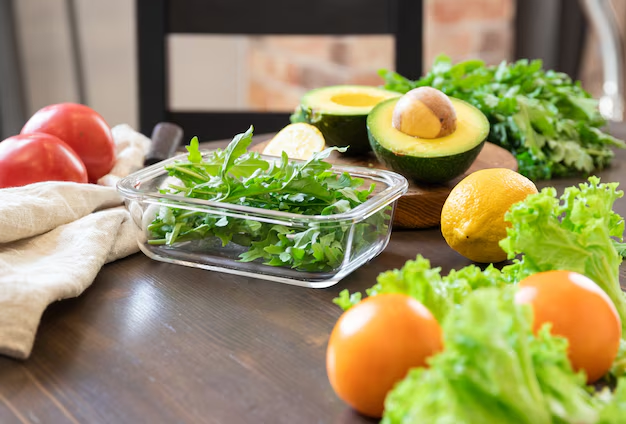Preserving Your Produce: Mastering the Art of Storing Vegetables in the Refrigerator
Picture yourself coming home from the farmer's market, eager to transform your bounty of fresh vegetables into a week of delightful meals. But as the days pass, you watch in dismay as once-crisp greens wilt and vibrant peppers lose their luster. Properly storing vegetables can extend their life, reduce waste, and keep your meals deliciously fresh. Let's embark on a journey to discover the secrets of preserving your produce in the refrigerator.
🥬 The Basics of Refrigerator Storage
Storing vegetables isn't just about keeping them cold. Understanding optimal conditions such as humidity and air circulation can make a significant difference in how long your vegetables stay fresh.
- Temperature Matters: Generally, vegetables thrive in colder temperatures. Aim to keep your refrigerator at around 40°F (4°C).
- Humidity Keeps It Fresh: Adjust the crisper drawers to maintain suitable humidity levels. Most vegetables prefer high humidity, while some like onions and garlic do better in low humidity, ensuring their longevity.
- Air Circulation is Key: Overpacking the fridge can impede air circulation. Arrange vegetables loosely to allow for optimal air flow, which helps keep them fresh.
🌽 Understanding Different Vegetable Needs
Not all vegetables are the same; each has unique needs based on its composition and moisture content. Tailoring your storage solutions to meet these varying needs can significantly enhance freshness.
Cruciferous Veggies: Broccoli, Cauliflower, and Cabbage
Cruciferous vegetables require a bit of special treatment:
- Broccoli and Cauliflower: Store them in a breathable plastic bag or wrap them in a damp paper towel. This retains moisture while preventing excess condensation.
- Cabbage: Similar to broccoli, wrap in a damp towel, place it in the crisper, and it can last for weeks.
Leafy Greens: Spinach, Kale, and Lettuce
Leafy greens are notorious for wilting quickly. Use these tips to extend their life:
- Wash and Wrap: Rinse greens lightly under cold water. Dry thoroughly using a salad spinner or towel.
- Storage Strategy: Store in a loosely closed plastic bag with a piece of paper towel to absorb excess moisture.
Root Vegetables: Carrots, Beets, and Radishes
Roots are generally hardy but still benefit from considerate storage:
- Tops Off: Cut greens off the roots to prevent them from drawing moisture from the vegetable.
- Keep Crisp: Store in a plastic bag or airtight container in the crisper drawer. Carrots can be immersed in a container of water for extra crispness.
Bulbs: Onions, Garlic, and Shallots
Bulb vegetables differ slightly:
- Stay in the Dark: These should be stored outside the fridge in a cool, dark environment.
- Keep Apart: Refrigerating onions can affect the flavor of nearby vegetables, so it’s better to keep them in a separate container if they absolutely must be in the fridge.
🍅 Tips for Several Popular Vegetables
- Tomatoes: These lose flavor and texture when refrigerated. Store on the counter until ripe, then refrigerate for a short period if necessary.
- Peppers: Store in a breathable plastic bag in the refrigerator; red, yellow, and green peppers each have their own peak storage time.
- Zucchini and Cucumbers: Prefer a dryer environment. Wrap with a towel to absorb excess moisture before placing in a fridge drawer.
🌱 Pro Tips for Vegetable Preservation
Mastering the basic storage advice is just the start. Here are some pro tips that can make you a veggie storage expert:
- Don’t Mix Produce: Different vegetables emit varying gases, like ethylene, which can prematurely ripen or spoil other produce.
- Regular Inventory Check: Set a routine to check your refrigerator’s vegetable collection, ensuring nothing goes bad unnoticed.
- Batch Cooking for Longevity: If you notice vegetables nearing the end of their freshness, consider batch cooking or freezing them to preserve their nutritional value.
💡 Quick Summary for Easy Reference
Here’s a visually distinct summary section to round out your knowledge:
| Vegetable Type | Storage Method | Key Tips |
|---|---|---|
| Cruciferous | High Humidity Drawer | Damp towel wrap to retain moisture |
| Leafy Greens | Breather Bag with Paper Towel | Spin-dry thoroughly before storing |
| Roots | Airtight or water for carrots | Remove tops to prevent moisture loss |
| Bulbs | Cool, dark place | Avoid fridge storage except for cut onions |
| Fruits (Tomato) | Counter until ripe, short fridge stay | Only refrigerate to extend life post-ripening |
🌟 Empowering Your Vegetable Knowledge
Armed with this guide, you’re now equipped to minimize waste and make your vegetables last longer. Not only does this help save money, but you can also enjoy the satisfaction of reducing your environmental footprint.
Consider trying out these practices to see how they transform your kitchen dynamics. Start small, notice the difference, and adjust as needed. Happy storing, and may your vegetables stay fresh and vibrant, ready to be transformed into delicious home-cooked meals!
